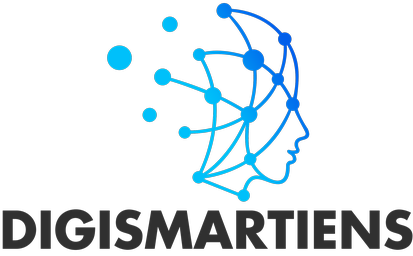
Introduction Of Headless CMS
In today’s fast-paced digital landscape, building flexible, scalable, and efficient web applications is more important than ever. At Digismarties, we leverage modern headless CMS solutions—specifically Strapi and Sanity—to power our client projects with future-ready architecture and seamless content management.
Here’s a look at how Digismarties integrates these technologies and why they’re central to our development stack.

Table of Contents
Why Headless CMS?
Traditional CMS platforms like WordPress bundle the backend (content management) and frontend (content presentation) into a single monolithic system. While that’s fine for basic websites, it limits flexibility and performance when building dynamic, multi-platform applications.
Headless CMS decouples the content from the presentation layer. This means we can deliver content via APIs to any frontend—React, Next.js, mobile apps, IoT devices, and more. For a future-forward agency like Digismarties, this is a game-changer.
Strapi: Open-Source, Developer-Friendly
Strapi is one of the most robust open-source headless CMS options out there. Digismarties frequently uses it for:
- Custom API Development: Strapi auto-generates RESTful or GraphQL APIs based on the data structure we define, saving hours of dev time.
- Authentication and Roles: Built-in user management and permissions help us create secure CMS environments for our clients.
- Self-Hosting: Need full control? We host Strapi on client servers or cloud platforms like Heroku or DigitalOcean to ensure complete data ownership.
Strapi fits perfectly into the JAMstack architecture, which is foundational to many Digismarties projects.
Sanity: Real-Time Collaboration & Structured Content
Sanity brings a whole new level of flexibility, especially for clients who need a real-time collaborative editing experience.
Here’s how Digismarties uses Sanity:
- Structured Content: Sanity’s Portable Text and schema-based approach allows us to model complex content types with precision.
- Real-Time Updates: Editors can collaborate live, and content changes appear instantly—no rebuilds or delays.
- Scalability: From blogs to e-commerce to enterprise dashboards, Sanity scales beautifully and integrates easily with frameworks like Next.js.
We also use Sanity’s GROQ query language to fine-tune how we fetch and display data across frontend experiences.
When We Use Strapi vs. Sanity
At Digismarties, the choice depends on project goals:
| Use Case | Strapi | Sanity |
|---|---|---|
| Custom backend APIs | ✅ Ideal for tailored APIs | ❌ Limited backend customization |
| Content-heavy websites | ✅ Great for blogs, landing pages | ✅ Perfect for complex content structures |
| Real-time collaboration | ❌ Not real-time | ✅ Real-time editing and preview |
| Developer control | ✅ Full control over backend logic | ⚠️ Abstracted backend, more configuration |
| Hosting flexibility | ✅ Self-host or cloud | ✅ Sanity Cloud or custom hosting options |
We often recommend Strapi for enterprise clients with unique backend needs, while Sanity is our go-to for content-driven projects where UX and editor experience are paramount.
Real-World Applications
Some examples of how Digismarties uses headless CMS in real projects:
- SaaS Dashboard: Strapi-powered APIs with custom user permissions, feeding data into a React admin interface.
- Marketing Sites: Sanity-managed content for startup landing pages, allowing the marketing team to update copy in real time without touching code.
- eCommerce Platforms: Hybrid solutions with Sanity handling product info and Strapi managing user accounts or order logic.
Final Thoughts
In a world where digital experiences are expected to be fast, responsive, and omnichannel, headless CMS platforms like Strapi and Sanity offer unmatched flexibility. At Digismarties, we’ve fully embraced this approach to build scalable, high-performing, and client-friendly applications.
Whether you’re a business in need of custom APIs, a marketing team wanting real-time content control, or a startup looking to launch fast—Digismarties is ready to deliver.
Discover more from Digismartiens
Subscribe to get the latest posts sent to your email.





